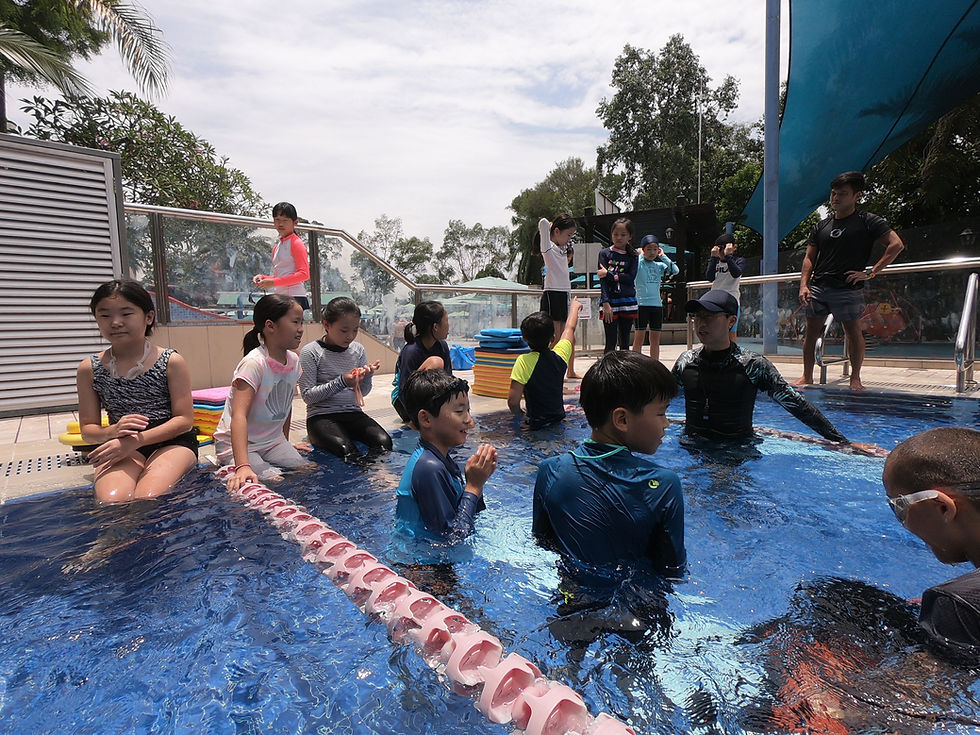Outdoor vs. Indoor Pools for Young Kids: Pros and Cons
- SG Sink Or Swim

- Aug 4
- 2 min read

Choosing the right environment for your child’s swimming lessons or playtime in the water is more important than you might think. The setting — outdoor vs. indoor pools — can have a major impact on your child’s comfort, safety, focus, and overall learning experience.
Whether you’re a parent considering swim lessons or a coach planning a youth program, understanding the pros and cons of outdoor and indoor pools for young kids can help you make a smarter choice.
🌞 Outdoor Pools: Pros and Cons
✅ Pros of Outdoor Pools
1. Natural Light and Fresh Air Kids benefit from being outside. Sunlight can lift their mood, and fresh air keeps them more energized.
2. More Space and Visibility Outdoor pools often have more room, which can reduce crowding and allow for bigger group activities.
3. Familiar Environment Swimming outdoors may feel more like playtime, making kids less anxious, especially beginners.
4. Built-in Break Opportunities Kids can dry off, snack, or relax poolside more easily between swim sessions.
❌ Cons of Outdoor Pools
1. Weather-Dependent Rain, wind, and extreme temperatures can cancel or interrupt lessons — making scheduling tricky.
2. Sun Exposure Risks UV rays are a concern, especially for young, sensitive skin. Sunscreen can help, but needs reapplication.
3. Distractions Birds, insects, and other outdoor activities can easily steal a child’s focus during lessons.
4. Water Temperature Variability Outdoor pools are often cooler and less predictable in temperature, which may be uncomfortable for little ones.
🏠 Indoor Pools: Pros and Cons
✅ Pros of Indoor Pools
1. Controlled Environment Rain or shine, lessons can continue without disruption. Water and air temperature are consistent.
2. Better Focus for Learning Fewer distractions allow instructors and students to concentrate on technique and instruction.
3. Year-Round Access Perfect for consistent swim practice, even in colder months or regions with unpredictable weather.
4. Safety Features and Cleanliness Indoor pools tend to have stricter health codes and cleaner facilities, offering added peace of mind.
❌ Cons of Indoor Pools
1. Strong Chlorine Smell and Humidity Some kids may be sensitive to the air quality in poorly ventilated indoor pools.
2. Less Natural Stimulation No sunshine, breeze, or playful outdoor energy may make indoor settings feel more rigid or less fun.
3. Space Limitations Indoor pools can feel crowded during peak hours or classes, especially for young swimmers needing personal space.
4. Higher Facility Costs Access to indoor pools may come at a higher price due to maintenance and climate control.
🧒 So, What’s Best for Young Kids?
It depends on your priorities. Here’s a quick guide:
Priority | Best Option |
Year-round consistency | Indoor pool |
Fun, play-based learning | Outdoor pool |
Focused instruction | Indoor pool |
Weather flexibility | Indoor pool |
Sensory-friendly | Depends on child – try both |
🏁 Final Thoughts
Both outdoor and indoor pools can offer amazing experiences for young swimmers. The key is to align your choice with your child’s needs and learning style. If possible, try both environments and see where your child thrives — some kids love the sunshine, others focus better in a quiet indoor space.
No matter where they swim, the most important factor is that your child feels safe, supported, and encouraged in the water.





Comments